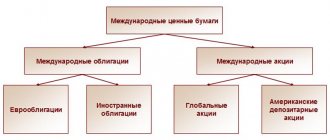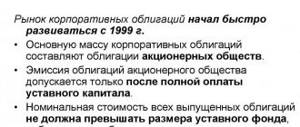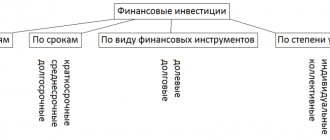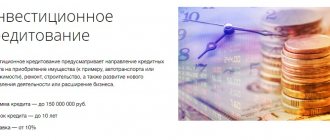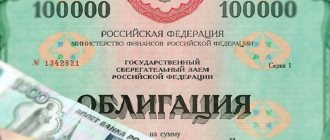“These problems cannot be solved by monetary policy measures. To stimulate the growth of investment activity, first of all, structural changes in the economy and non-financial measures are needed that will help improve the business climate and develop competition, including measures to reduce the share of the public sector in the economy,” the review emphasizes.
Read on RBC Pro
The first trillionaires: who is breathing down the backs of Elon Musk and Jeff Bezos How Airbnb found a new source of income in a world without tourism Why it has become unfashionable to be a leader You won’t get off with dismissal: for which the CFO faces prison
The survey, conducted in 2021, included 495 private and public enterprises from various manufacturing and extractive industries. Organizations of the fuel and energy complex were not included in the sample. The companies answered questions about investments for 2016–2018.
The authors of the report point out that the survey is not representative of small and medium-sized businesses and is focused mainly on large enterprises, which are the main engine of investment and growth in the Russian economy. Of the total sample, 29% of companies are small and medium-sized enterprises, 46% are large and 25% are large.
Process nuances
Investment in production is represented by the transfer of money to production, which involves the creation of new material goods. Their main purpose is to meet the needs of society.
Investments in new production facilities can be presented in different forms, since they depend on the chosen direction of the company’s work. Most often, large and experienced investors prefer to invest their own funds in the following areas:
- industry;
- construction of production facilities;
- forestry or fisheries;
- agricultural complex;
- information Technology.
The above areas are considered the most promising and interesting for many investors. For them, the risks of losses are minimal, since the demand for production results is considered high.
[edit] Notes
| Investments in Russia | |
| Story | 1990s (1990, 1991, 1992, 1993, 1994, 1995, 1996, 1997, 1998, 1999) • 2000s (2000, 2001, 2002, 2003, 2004, 2005, 2006, 2007 , 2008, 2009 , 2010, 2011, 2012, 2013, 2014, 2015, 2021, 2017, 2021, 2021, 2020) |
| Sectors of the economy | Railway transport • Electric power industry • Chemical industry • Oil refining industry • Non-ferrous metallurgy • Ferrous metallurgy • Mechanical engineering • Automotive industry • Shipbuilding • Construction materials industry • Manufacturing industry • Glass industry • Timber industry • Agro-industrial complex • Transport • Trade |
| Foreign investment | Investments from France • Investments from the USA • Investments from Germany • Investments from Italy • Investments from Great Britain • Investments from Finland • Investments from Canada • Automotive industry • Building materials industry • Electric power industry • Agricultural engineering • Chemical industry • Food industry |
| Investment climate | National Entrepreneurial Initiative to Improve the Investment Climate in Russia |
| Central Federal District | Belgorod region • Bryansk region • Vladimir region • Voronezh region • Ivanovo region • Kaluga region • Kostroma region • Kursk region • Lipetsk region • Moscow region • Oryol region • Ryazan region • Smolensk region • Tambov region • Tver region • Tula region • Yaroslavl region • Moscow |
| Northwestern Federal District | Karelia • Komi • Arkhangelsk region • Nenets Autonomous Okrug • Vologda region • Kaliningrad region • Leningrad region • Murmansk region • Novgorod region • Pskov region • St. Petersburg |
| Southern Federal District | Adygea • Kalmykia • Krasnodar region • Astrakhan region • Volgograd region • Rostov region |
| KFO | Crimea • Sevastopol |
| North Caucasian Federal District | Dagestan • Ingushetia • Kabardino-Balkaria • Karachay-Cherkessia • North Ossetia • Chechnya • Stavropol Territory |
| Volga Federal District | Bashkortostan • Mari El • Mordovia • Tatarstan • Udmurtia • Chuvashia • Perm region • Kirov region • Nizhny Novgorod region • Orenburg region • Penza region • Samara region • Saratov region • Ulyanovsk region |
| Ural Federal District | Kurgan region • Sverdlovsk region • Tyumen region • Khanty-Mansi Autonomous Okrug • Yamalo-Nenets Autonomous Okrug • Chelyabinsk region |
| Siberian Federal District | Altai • Buryatia • Tyva • Khakassia • Altai region • Transbaikal region • Krasnoyarsk region • Irkutsk region • Kemerovo region • Novosibirsk region • Omsk region • Tomsk region |
| Far Eastern Federal District | Yakutia • Kamchatka Territory • Primorsky Territory • Khabarovsk Territory • Amur Region • Magadan Region • Sakhalin Region • Jewish Autonomous Region • Chukotka Autonomous Okrug |
| Other | Investment policy • Investment Fund of Russia • Venture investments |
Source - ""
Category: Foreign investment in the Russian automotive industry
Pros of investing
Investments in production have many undeniable advantages. These include:
- high speed of conversion of invested money into significant profit;
- if an organization specializes in the production and sale of various goods, then immediately after selling the products you can feel the return on investment;
- the faster the funds are returned to the investor, the sooner he can direct them to new objects;
- This area of investment is characterized by fairly low risks.
If such an investment is planned, then investors should carefully choose the manufacturing enterprise itself in which to invest money, since it must be interesting, reliable, promising and understandable.
Myth two: it’s not profitable
But this is pure fiction. If you do everything correctly, it will be very profitable. But if you choose the wrong niche, offer a product to the wrong target audience, or fail in your pricing policy, the company will not make money. But it’s the same in sales, and in any other business too: production is no different.
Investment methods
Investor funds can be used in different ways. These include:
- investments in the main production by studying the investment project, after which the project is implemented at the expense of investors;
- purchasing shares of a company, after which the shareholder can directly participate in its management;
- investing money in the authorized capital, which leads to the development and expansion of the enterprise, and it also becomes more stable and attractive to other investors or credit institutions;
- provision of various equipment for leasing.
These methods are the most popular. The choice depends on what kind of funds the investor has. Additionally, it is taken into account whether he is required to take part in the management of the company or whether it is enough for him to receive passive income.
How beneficial is it?
Industrial investments are a highly profitable way of earning money, which at the same time has very high requirements for potential investors.
It is necessary to have financial literacy, understand legal and economic intricacies, maintain sober thinking and quickly make the right decisions. In many ways, such skills and the necessary tools are acquired through practical experience.
However, remember that the key task in industrial investments is to preserve and increase the invested money. Therefore, before taking a crucial step, it is necessary to conduct a preliminary assessment of the project:
- how profitable is it in principle to invest in comparison with less risky investment instruments;
- general development at the moment, the availability of industrial production to implement the strategy;
- the risks of non-return are compensated by large profits;
- absence of dark spots, failed deals, hidden and contradictory information in the company’s history;
- the ability to meet a given project deadline while achieving the expected profit.
For this reason, it is necessary to include in the strategy the ability to compensate for failure in order to minimize the possible risk without losing profit.
It is always necessary to replenish your knowledge base
What benefits does the investor receive?
By investing in production, investors can expect some positive results. These include:
- an increase in equity capital due to constant growth in profits, and this can be expressed not only by an increase in the money supply, but also by the accumulation of securities;
- non-economic effects, which include opportunities to attract new clients or counterparties, work regularly on the market, and expand areas of activity;
- social return represented by recognition from the public and owners of large enterprises.
An investor can be not only an individual, but also a company seeking to expand its sphere of influence. Constant investment of funds makes it possible to gain a foothold in the market and develop existing success.
The global decline in industrial production exceeded experts' expectations
After a protracted recession in the economies of some of the world's largest countries in terms of GDP, the crisis has truly arrived in 2021. But the “black swan” of the global economy turned out to be not only and not so much the factors listed above, but the outbreak of a new coronavirus infection that was not expected and therefore not taken into account by any of the experts. One after another, states closed their borders and limited communication between cities and regions, people went into self-isolation, and production stopped.
At the Coface Country Risk Conference 2021, which took place in February in Paris, experts from the international group Coface predicted that 2020 would be a particularly difficult year for the metallurgy, automotive, textile and pulp and paper industries. However, taking into account how closely the industrial production sectors are interconnected, it became clear that the crisis could turn out to be even deeper than previously expected.
The metals industry is at the center of a trade war between the United States and China. Difficulties in the global automotive industry affected the metallurgy and chemical industries respectively. Fewer cars are created and sold - there is less demand for chemicals, plastics, and synthetic rubbers. And this is against the backdrop of a forced reduction in prices for a number of oil and gas chemical products, in particular ethylene and its derivatives, associated with ever-increasing competition, and therefore a reduction in profits.
Coface experts also predicted a drop in profits for the oil industry and the oil refining sector. And against the background of this, the situation was predicted to worsen for the transport sector. Which again promised another round of negativity for both the automotive industry and the oil refining industry in terms of reduced demand for automobile, marine and aviation fuel.
Experts from the international Coface group predicted a difficult 2021 for global industrial production
Main types of investments by investment object
Investments in manufacturing companies come in several varieties. These include:
- Investments in expansion of production facilities. They allow you to increase the company’s capacity, as well as expand the scope of its activities.
- Investments in production. Such investments are required if the company lacks the capabilities and funds to increase production volume. The invested funds ensure an increase in the amount of equipment and the involvement of more specialists in the work.
- Construction of new facilities. The process involves the creation of a new company aimed at producing unique products that have not previously been presented on the market.
- Technical re-equipment of production. This includes the purchase of new equipment or inventory, which allows the creation of new products.
- Investments in means of production. They consist of replacing morally or physically obsolete equipment and other items used in the production of various goods. This even includes assets that do not directly impact the goods, such as the transport needed to transport raw materials, the buildings themselves, or other objects.
- Advertising expenses, the main purpose of which is to attract potential buyers. Such an investment is necessary if the production is truly considered promising and innovative, but due to the low popularity of the company or product it is not possible to ensure optimal demand.
Before investing money, each investor must make sure that the funds will be directed to the most relevant areas of the enterprise’s work.
Fixed capital and indicators of its use
Fixed capital (or fixed assets) are means of labor that:
1) participate in production many times,
2) at the same time, they gradually wear out both physically (material wear and tear) and morally (obsolescence, depreciation as a result of technical progress)
3) are also gradually depreciated.
Depreciation (from the Latin amortisatio - repayment) in economics is a two-fold process: on the one hand, it is a gradual decrease in the value of fixed assets due to their wear and tear; and on the other hand, the gradual transfer of this value to the cost of manufactured products.
Depreciation charges (in the amount of certain shares of the initial cost of the object) are included in the cost price and prices of goods, and then, as part of the proceeds from sales, they go to a special depreciation fund, accumulate in it and are used for repair, improvement and renovation (updating) of labor equipment.
The following funds are distinguished in the structure of fixed capital:
a) active (machines, machines and other equipment that is directly involved in production) and
b) passive (industrial buildings, structures and other objects that create the necessary conditions for production).
To determine the efficiency of using fixed assets, three main indicators are used:
1) capital productivity,
2) capital intensity and
3) equipment shift ratio.
Thus, capital productivity reflects the degree of productivity of funds and is determined by the cost of production per unit value of funds. In turn, capital intensity is an indicator inverse to capital productivity. It characterizes the costs of fixed assets (that is, their cost) per unit of output.
Here is a hypothetical example of two factories. One produced products in a year worth 10 million rubles. with the cost of its fixed capital being 2 million rubles. Another - in the amount of 20 million rubles, but with a fixed capital of 5 million rubles. It is easy to estimate that the first enterprise uses its fixed capital better than the second: its capital productivity was 5 rubles. (10:2) versus 4 rub. (20:5) from the opponent. The same thing (but “on the contrary”) is reflected by the capital intensity: at the first plant it is lower (less fixed capital costs per 1 ruble of product) - 0.2 rubles. (2:10), the second one is higher - 0.25 rubles. (5:20).
In turn, the equipment shift ratio shows how many shifts per day on average each unit of equipment installed at the enterprise worked during a given period. So, for example, if out of 200 machines in a workshop, 180 worked in the 1st shift, 100 in the 2nd, and 40 in the 3rd, then the shift ratio = 1.6 [(180+100+40):200 ], i.e. each machine worked 1.6 shifts in a 3-shift mode. The higher the shift ratio, the more intensively the equipment is used and the more products it will produce by the time it becomes obsolete and inevitably replaces fixed assets with new ones. In conditions of rapid progress, this is especially important. That's why forward-thinking businesses work on multi-shift schedules, striving to get the most out of their technology.
Full attachment
Such investments in production consist in the fact that only one investor invests his funds, on the basis of which the project is implemented, equipment is purchased, or production volumes are increased. This process has both pros and cons. The features of a full investment include the following:
- you really have to invest a lot of money;
- the procedure is characterized by increased investment risk;
- if the goal of the investment project is not achieved, the investor will have to face high losses;
- if a positive result is obtained from the investment, then the only investor will receive high profits, which will not have to be shared with other investors.
Most often, full investments are used by large and long-established investors in the market. They must have the appropriate capital and the necessary knowledge. Only in this case will it be relevant to increase investment in production with a low risk of loss of funds.
Myth three - I won’t be able to compete with large manufacturers
So there is no need to compete with them . It is clear that if you start making furniture or producing food, you will face stiff competition. But for a broad category of consumer goods, this rule is completely unfair.
Competitors map
Equity investments
Such investments assume that different investors, represented by individuals or companies, invest in the same production. This process has many advantages. This is due to the low risk of loss, since each investor carefully evaluates the feasibility of the decision before using his own capital.
The disadvantages include low profits, since all income is distributed among all investors, for which the share of all investors is taken into account.
Most often, this method of investing is chosen by beginners who are just studying this area, and therefore do not want to risk a large amount of money.
How to optimize investments?
Every investor who has been working in the field of investing for a long time understands that for successful activity it is necessary to carefully evaluate the investment object, analyze the prospects for the development of a production enterprise, compare different offers, and also optimize investments. Only in this case will investments and production of goods be effective.
To optimize investments, we use professional advice:
- the state of the country's economy as a whole is analyzed;
- tax legislation is assessed, as well as changes made to it regularly;
- the specific market segment in which the manufacturing enterprise operates is studied;
- all competitors in the market are identified;
- analyze supply and demand for specific goods produced by a manufacturing company;
- return on investment is assessed;
- The approximate payback period of the investment is calculated.
Additionally, the investor must regularly carry out work based on which production costs are minimized. Only in this case will investments and production volumes grow, so the investor will receive high returns from his work.
Issuer Description
The company was born in 1913, but official registration occurred only four years later. BMW initially produced aircraft engines, which continued until the end of the World War. During the post-war crisis, the company was almost sold, but, fortunately, BMW management managed to maintain independence, after which the corporation began to take off, which has not stopped to this day.
The issuer has a large number of enterprises and factories on all continents, employing hundreds of thousands of employees, as well as many subsidiaries that represent the interests of the corporation and are involved in the support and sales of BMW products in the European, American and Asian markets.
Every year the concern produces more than a million premium cars, which are listed all over the world. The concern is also engaged in research activities in its field.
At one time, the automaker acquired a number of global brands, such as Mini and Rolls-Royce Motor Cars, whose cars it still successfully sells to this day.
Most of the company's shares are owned by three owners, and the remaining 53% are publicly traded on stock exchanges.
How to choose an investment object?
When choosing a production facility where funds will be invested, some significant factors should be assessed. These include the following:
- the investment project is carefully studied;
- the market is analyzed to make sure that the goods produced are promising and in demand;
- possible distribution channels are located;
- customer reaction to products is assessed;
- all competitors and their proposals are identified;
- the estimated profitability of the project is calculated.
The risks and potential profits from work depend on the correct choice of investment object. If an investor does not have the necessary knowledge and capabilities, then he can use the help of specialists who, in a short period of time, will study a specific area of \u200b\u200bthe company's activities, after which they will transmit a detailed report to the customer.

